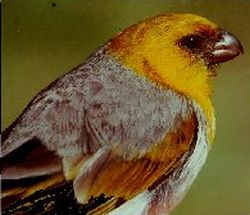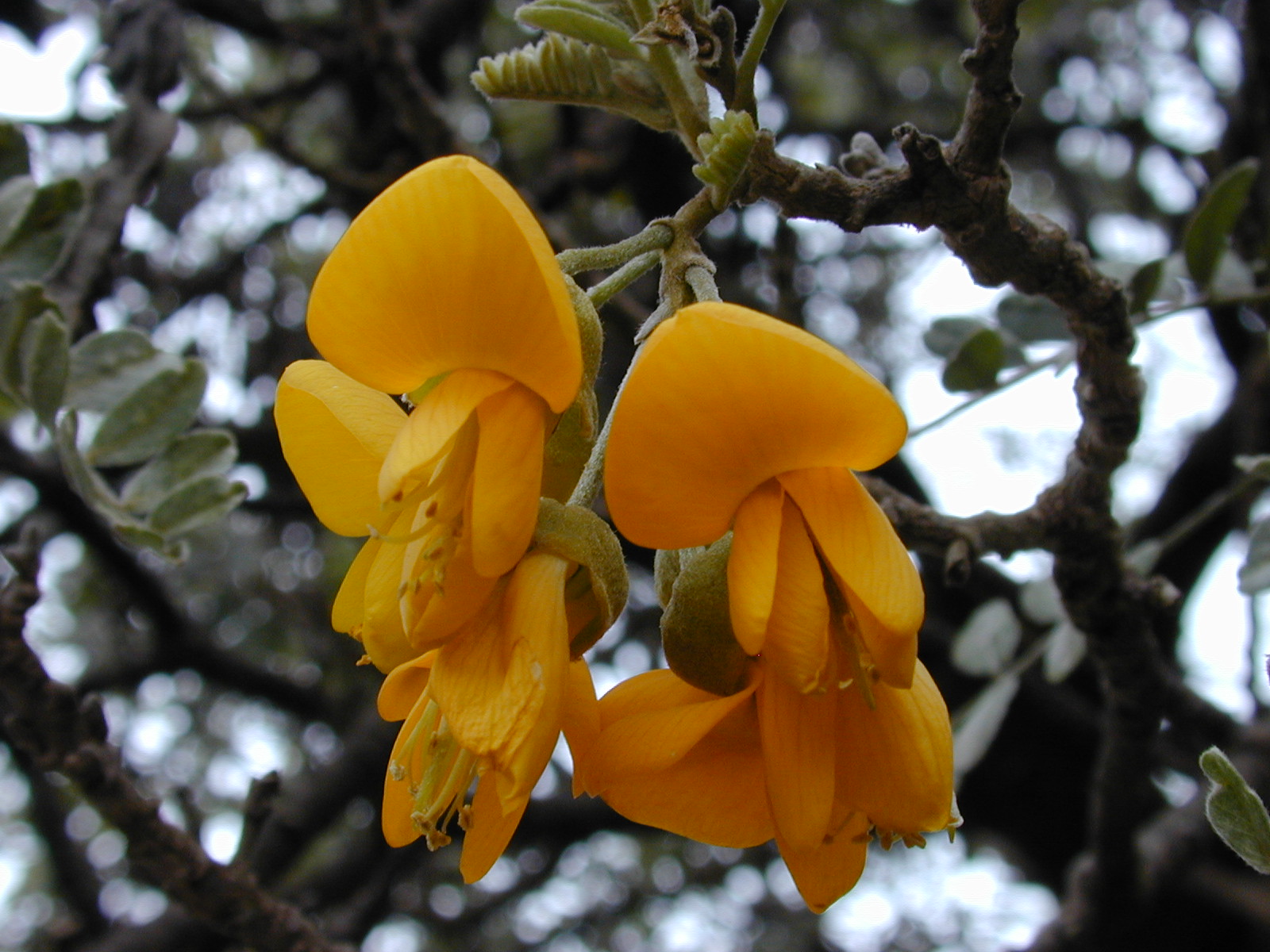|
Palila
The palila (''Loxioides bailleui'') is a critically endangered finch-billed species of Hawaiian honeycreeper. It has a golden-yellow head and breast, with a light belly, gray back, and greenish wings and tail. The bird has a close ecological relationship with the '' māmane'' tree (''Sophora chrysophylla''), and became endangered due to destruction of the trees and accompanying dry forests. The first specimen of the palila was collected in 1876 at the Greenwell Ranch on the Big Island by Pierre Étienne Théodore Ballieu (1828–1885), who was French consul in Hawai‘i from 1869 to 1878. The type specimen (No. 1876-645) is housed at the Muséum national d'histoire naturelle in Paris. Taxonomy The Hawaiian honeycreepers (Drepanididae) are sometimes included in the true finch family (Fringillidae). Oustalet scientifically described the ''palila'' in 1877. Named ''Loxioides bailleui'' by him, it was for some time united with several other "parrot-billed" Hawaiian honeycreeper spec ... [...More Info...] [...Related Items...] OR: [Wikipedia] [Google] [Baidu] |
Mamane
''Sophora chrysophylla'', known as ''māmane'' in Hawaiian, is a species of flowering plant in the pea and bean family, Fabaceae, that is endemic to Hawaii. It is highly polymorphic, growing as a shrub or tree, and able to reach a height of in tree form. Yellow flowers are produced in winter and spring. Biology ''S. chrysophylla'' has ridged golden brown branches. The tree has pinnately compound leaves with 6 to 10 pairs of leaflets. Each leaflet is long and wide. Leaves are smooth, or with gray or yellow hairs on the underside. The specific name is derived from the Greek words χρυσός (''chrysós''), meaning "gold," and φυλλον (''phyllos''), meaning "leaf." Flowers are found at the bases of leaves or the ends of branches in clusters – that is, they occur in axillary or terminal racemes. The corolla is yellow. The petal size ranges from long, and wide. The tree blooms in winter and spring. The height of the flowering season is in mid-spring. ''Māmane'' ... [...More Info...] [...Related Items...] OR: [Wikipedia] [Google] [Baidu] |
Hawaiian Honeycreeper
Hawaiian honeycreepers are a group of small birds endemic to Hawaii. They are members of the finch family Fringillidae, closely related to the rosefinches (''Carpodacus''), but many species have evolved features unlike those present in any other finch. Their great morphological diversity is the result of adaptive radiation in an insular environment. Many have been driven to extinction since the first humans arrived in Hawaii, with extinctions increasing over the last two centuries following European discovery of the islands, with habitat destruction and especially invasive species being the main causes. Taxonomy Before the introduction of molecular phylogenetic techniques, the relationship of the Hawaiian honeycreepers to other bird species was controversial. The honeycreepers were sometimes categorized as a family Drepanididae,Clements, J. 2007. ''The Clements Checklist of the Birds of the World.'' 6th ed. other authorities considered them a subfamily, Drepanidinae, of Frin ... [...More Info...] [...Related Items...] OR: [Wikipedia] [Google] [Baidu] |
Loxioides
''Loxioides'' is a genus of Hawaiian honeycreeper, in the subfamily Carduelinae. The birds are endemic to Hawaii. Species It contains the following species: * '' Loxioides bailleui'' Oustalet, 1877 - palila * '' Loxioides kikuichi'' James & Olson, 2006 - Kauai palila (prehistoric; possibly survived to the early 18th century The 18th century lasted from 1 January 1701 (represented by the Roman numerals MDCCI) to 31 December 1800 (MDCCC). During the 18th century, elements of Enlightenment thinking culminated in the Atlantic Revolutions. Revolutions began to ch ...) See also * * References {{Taxonbar, from=Q3016761 Hawaiian honeycreepers Endemic fauna of Hawaii Bird genera Bird genera with one living species Carduelinae Taxa named by Émile Oustalet ... [...More Info...] [...Related Items...] OR: [Wikipedia] [Google] [Baidu] |
Finch
The true finches are small to medium-sized passerine birds in the family Fringillidae. Finches generally have stout conical bills adapted for eating seeds and nuts and often have colourful plumage. They occupy a great range of habitats where they are usually resident and do not migrate. They have a worldwide native distribution except for Australia and the polar regions. The family Fringillidae contains more than two hundred species divided into fifty genera. It includes the canaries, siskins, redpolls, serins, grosbeaks and euphonias, as well as the morphologically divergent Hawaiian honeycreepers. Many birds in other families are also commonly called "finches". These groups include the estrildid finches ( Estrildidae) of the Old World tropics and Australia; some members of the Old World bunting family ( Emberizidae) and the New World sparrow family ( Passerellidae); and the Darwin's finches of the Galapagos islands, now considered members of the tanager family (Th ... [...More Info...] [...Related Items...] OR: [Wikipedia] [Google] [Baidu] |
Hawaiian Tropical Dry Forests
Hawaiian tropical dry forests are a tropical dry broadleaf forest ecoregion in the Hawaiian Islands. They cover an area of on the leeward side of the main islands and the summits of Niihau and Kahoolawe. These forests are either seasonal or sclerophyllous. Annual rainfall is less than and may be as low as . The rainy season there lasts from November to March. Dominant tree species include ''koa'' (''Acacia koa''), ''koaia'' ('' A. koaia''), ''akoko'' (''Euphorbia'' spp.), ''ōhia'' lehua (''Metrosideros polymorpha''), ''lonomea'' ('' Sapindus oahuensis''), ''māmane'' (''Sophora chrysophylla''), ''loulu'' (''Pritchardia'' spp.), ''lama'' ('' Diospyros sandwicensis''), ''olopua'' ('' Nestegis sandwicensis''), ''wiliwili'' ('' Erythrina sandwicensis''), ''ohe makai'' (''Polyscias sandwicensis''), and ''iliahi'' (''Santalum'' spp.). Endemic plant species include ''hau heleula'' (''Kokia cookei''), ''uhiuhi'' ('' Caesalpinia kavaiensis''), and '' Gouania'' spp. The '' palila'' (' ... [...More Info...] [...Related Items...] OR: [Wikipedia] [Google] [Baidu] |
Émile Oustalet
Jean-Frédéric Émile Oustalet (24 August 1844 – 23 October 1905) was a French zoologist who contributed greatly to ornithology. Oustalet was born at Montbéliard, in the department of Doubs (department), Doubs. He studied at the Ecole des Hautes-Etudes and his first scientific work was on the respiratory organs of dragonfly larvae. He was employed at the Muséum National d'Histoire Naturelle, where he succeeded Jules Verreaux as assistant-naturalist in 1875. In 1900 he succeeded Alphonse Milne-Edwards as Professor of Mammalogy. Oustalet became especially interested in birds after the museum received new specimens from Indo-China and Africa. He took a special interest in the birds of China and co-authored ''Les Oiseaux de la Chine'' (1877) with Armand David, and also wrote ''Les Oiseaux du Cambodge'' (1899). He described a specimen from Ilhéu Branco, Branco as a separate species ''Passer brancoensis'' in 1883, which was recognised as the subspecies ''Passer iagoensis brancoe ... [...More Info...] [...Related Items...] OR: [Wikipedia] [Google] [Baidu] |
Beak
The beak, bill, or rostrum is an external anatomical structure found mostly in birds, but also in turtles, non-avian dinosaurs and a few mammals. A beak is used for pecking, grasping, and holding (in probing for food, eating, manipulating and carrying objects, killing prey, or fighting), preening, courtship, and feeding young. The terms ''beak'' and '' rostrum'' are also used to refer to a similar mouth part in some ornithischians, pterosaurs, cetaceans, dicynodonts, rhynchosaurs, anuran tadpoles, monotremes (i.e. echidnas and platypuses, which have a bill-like structure), sirens, pufferfish, billfishes, and cephalopods. Although beaks vary significantly in size, shape, color and texture, they share a similar underlying structure. Two bony projections–the upper and lower mandibles–are covered with a thin keratinized layer of epidermis known as the rhamphotheca. In most species, two holes called ''nares'' lead to the respiratory system. Etymology Although the wo ... [...More Info...] [...Related Items...] OR: [Wikipedia] [Google] [Baidu] |
Ventral
Standard anatomical terms of location are used to describe unambiguously the anatomy of humans and other animals. The terms, typically derived from Latin or Greek roots, describe something in its standard anatomical position. This position provides a definition of what is at the front ("anterior"), behind ("posterior") and so on. As part of defining and describing terms, the body is described through the use of anatomical planes and axes. The meaning of terms that are used can change depending on whether a vertebrate is a biped or a quadruped, due to the difference in the neuraxis, or if an invertebrate is a non-bilaterian. A non-bilaterian has no anterior or posterior surface for example but can still have a descriptor used such as proximal or distal in relation to a body part that is nearest to, or furthest from its middle. International organisations have determined vocabularies that are often used as standards for subdisciplines of anatomy. For example, '' Terminolog ... [...More Info...] [...Related Items...] OR: [Wikipedia] [Google] [Baidu] |
Olive
The olive, botanical name ''Olea europaea'' ("European olive"), is a species of Subtropics, subtropical evergreen tree in the Family (biology), family Oleaceae. Originating in Anatolia, Asia Minor, it is abundant throughout the Mediterranean Basin, with wild subspecies in Africa and western Asia; modern Cultivar, cultivars are traced primarily to the Near East, Aegean Sea, and Strait of Gibraltar. The olive is the type species for its genus, ''Olea'', and lends its name to the Oleaceae plant family, which includes species such as Syringa vulgaris, lilac, jasmine, forsythia, and Fraxinus, ash. The olive fruit is classed botanically as a drupe, similar to the cherry or peach. The term oil—now used to describe any Viscosity, viscous Hydrophobe, water-insoluble liquid—was virtually synonymous with olive oil, the Vegetable oil, liquid fat made from olives. The olive has deep historical, economic, and cultural significance in the Mediterranean; Georges Duhamel (author), George ... [...More Info...] [...Related Items...] OR: [Wikipedia] [Google] [Baidu] |
Sole (foot)
In humans, the sole of the foot is anatomically referred to as the plantar aspect. Structure The glabrous skin on the sole of the foot lacks the hair and pigmentation found elsewhere on the body, and it has a high concentration of sweat pores. The sole contains the thickest layers of skin on the body due to the weight that is continually placed on it. It is crossed by a set of creases that form during the early stages of embryonic development. Like those of the palm, the sweat pores of the sole lack sebaceous glands. The sole is a sensory organ by which the ground can be perceived while standing and walking. The subcutaneous tissue in the sole has adapted to deal with the high local compressive forces on the heel and the ball (between the toes and the arch) by developing a system of "pressure chambers." Each chamber is composed of internal fibrofatty tissue covered by external collagen connective tissue. The septa (internal walls) of these chambers are permeated by n ... [...More Info...] [...Related Items...] OR: [Wikipedia] [Google] [Baidu] |






